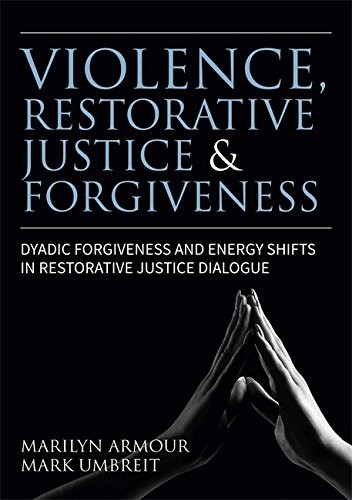
This major and original research project shows how restorative justice dialogue works, and highlights the role of forgiveness within it. Based on interviews of victims who went through Victim Offender Dialogue with responsible persons in prison, it looks at how energy shifts in dialogue between harming and harmed parties can lessen the toxicity associated with the crime and bring about a deeper experience of emotional release.
Synopsis: A groundbreaking book founded on extensive original research, designed to determine how restorative dialogue works, and the role of forgiveness within it. The research involved interviews with 20 victims who went through a Victim Offender Dialogue (used in crimes of severe violence), and documents how the shifts in energy during the course of their dialogue moves the toxicity associated with the crime to a different place. This study explores the role of bilateral forgiveness in restorative work and addresses key questions about the role of forgiveness in restorative justice, such as how it can be measured. It also outlines a model which explains how the energy flow of dyadic forgiveness in restorative justice dialogue is formed. Rich in data and in findings, this book will deepen understanding of how restorative justice works, and will inform future research and practice in the field.

Lead author and project manager Marilyn Armour, Ph.D., is a University Distinguished Teaching Professor at the Steve Hicks School of Social Work, University of Texas, Austin. She holds a master’s and a Ph.D. in social work from the University of Minnesota’s School of Social Work.Prior to becoming an academic, she was a psychotherapist with an emphasis on violent death, trauma, and family relationships.